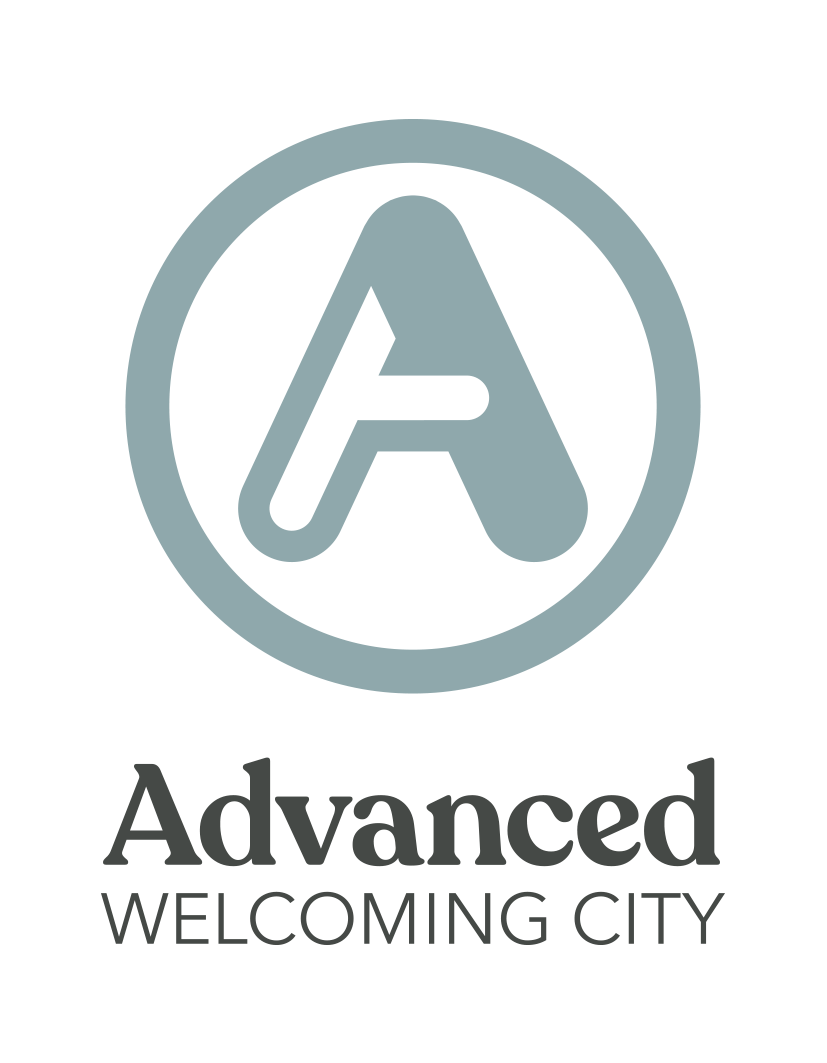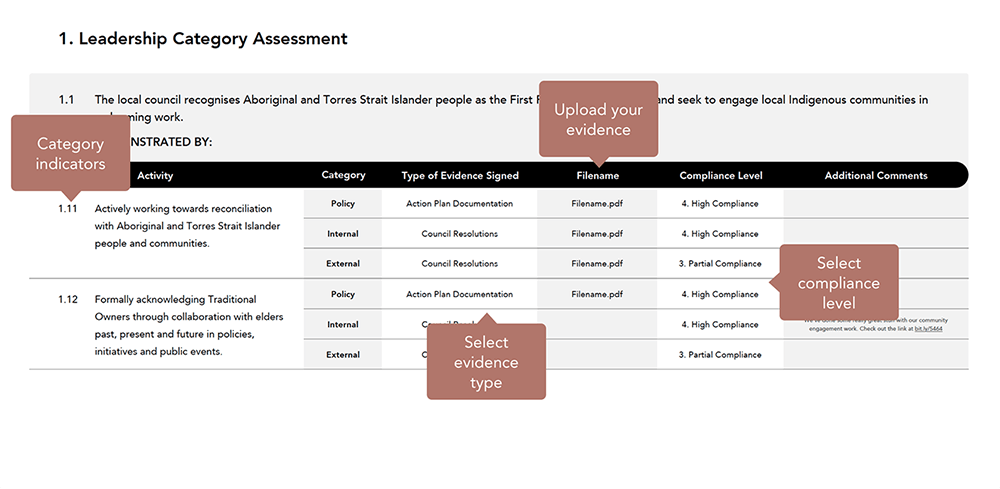How the Accreditation Portal works
Assessment Types
There are five different levels within the Welcoming Cities accreditation, each requiring different levels of evidence and assessment. A council may apply for the accreditation level they deem themselves to have the policies and programs to achieve. For a more detailed understanding of the accreditation process, please see the (link) Welcoming Cities Accreditation Manual.
There are six categories in the Welcoming Cities Standard and each one is comprised of a set of indicators. When undertaking an application councils must upload evidence of compliance with these indicators, there must be evidence provided that the indicator is represented in: policy, and practice. Commentary must be provided to contextualise all evidence.
-

Committed
A Committed council has submitted a letter of commitment to the Welcoming Cities network signed by the Mayor or CEO of the council. -

Established
An Established council has completed an assessment addressing the core elements of the Standard across all six categories of the Welcoming Cities Standard. This application reviewed and approved by Welcoming Cities. -

Advanced
An Advanced council has completed the core elements of the Welcoming Cities Standard PLUS additional indicators to complete 60% of the Standard (44 indicators total). The application is reviewed and approved by Welcoming Cities. -

Excelling
An Excelling council has completed the core elements of the Welcoming Cities Standard PLUS additional indicators to complete 95% of the Standard (70 indicators total). The application is reviewed and approved by Welcoming Cities. -

Mentoring
A Mentoring council has first completed the Excelling accreditation, completing all categories of the Welcoming Cities Standard. A Mentoring council has then applied to and been approved by the Welcoming Cities Standard Advisory Committee to be a Mentoring council.
There are six categories in the Welcoming Cities Standard and each one is comprised of a set of indicators. When undertaking an application councils must upload evidence of compliance with these indicators, there must be evidence provided that the indicator is represented in: policy, and practice. Commentary must be provided to contextualise all evidence.
Assessment Criteria
A council will become accredited if they score a minimum 80% compliance across all indicators in the required categories for their level. Compliance is measured with a score of 1-5 as follows:
- No compliance
- Low compliance
- Partial compliance
- High compliance
- Full compliance
A council’s score is calculated in the following manner:
- Each indicator in each category will have score of 1-5, based on the compliance level of that indicator
- The average score across indicators will create the score for the category
- The average score across all categories will be the final score for the assessment

